National Travel Destinations
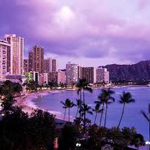 No one knows for certain when Honolulu was founded. Hawaiian oral histories and modern archeology indicate a settlement in Honolulu about 1100 A.D., but it may have been settled earlier as the first Polynesian migrants arrived nearly 2,000 years ago.
No one knows for certain when Honolulu was founded. Hawaiian oral histories and modern archeology indicate a settlement in Honolulu about 1100 A.D., but it may have been settled earlier as the first Polynesian migrants arrived nearly 2,000 years ago.King Kamehameha I, who conquered Oahu in a decisive battle fought the length of Nuuanu Valley, moved his court from Hawaii Island to Waikiki in 1804. He relocated to what is now downtown Honolulu five years later. The royal housing complex site is under the Marin building built next to Nimitz Highway at Queen and Bethel streets. The monarchs also maintained official residences in Kailua on Hawaii and Lahaina on Maui.
When Honolulu (meaning sheltered harbor) was named is unclear. The old name for Honolulu is said to be Kou, a district roughly encompassing the area from Nuuanu Avenue to Alakea Street and from Hotel Street to Queen Street (then the edge of the waterfront) which is the heart of the present downtown district.
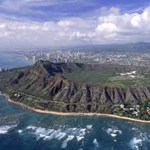 Honolulu Harbor, known also as Kulolia, was entered by the first foreigner, Captain William Brown of the English ship Butterworth, in 1794. He named the harbor Fair Haven. Other foreign captains then referred to it as Brown's Harbor. The name Honolulu (with numerous variations in spelling) soon came into use. In the 1800s, the City of Honolulu was the area near the harbor which is now referred to as downtown Honolulu.
Honolulu Harbor, known also as Kulolia, was entered by the first foreigner, Captain William Brown of the English ship Butterworth, in 1794. He named the harbor Fair Haven. Other foreign captains then referred to it as Brown's Harbor. The name Honolulu (with numerous variations in spelling) soon came into use. In the 1800s, the City of Honolulu was the area near the harbor which is now referred to as downtown Honolulu.Honolulu became the most important shipping point in Hawaii. It flourished with the sandalwood export and then as a supply port for whalers. Sugar, pineapples, light manufacturing, tourism and defense installations followed as economic mainstays and the last two remain so to this day.
Seamen, colonizers, adventurers, merchants and missionaries from America and Europe westernized the Hawaiian Islands. Probably the greatest influence was by the group of missionaries who arrived from New England in 1820. They left a lasting imprint in fields of religion, education, economics and politics. Later, immigrants from Asia brought other cultural values and practices that helped to fashion the unique Hawaiian culture of today.
In 1850, Kamehameha III proclaimed Honolulu the capital city of his kingdom. It is still the capital and dominant city of the nation's 50th State.
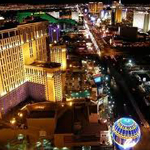 Las Vegas is the most populous city in the U.S. state of Nevada and the county seat of Clark County. Las Vegas is an internationally renowned major resort city for gambling, shopping, and fine dining. The city bills itself as The Entertainment Capital of the World, and is famous for its consolidated casino–hotels and associated entertainment. A growing retirement and family city, Las Vegas is the 28th-most populous city in the United States, with an estimated population by the U.S. Census Bureau of 583,756 as of 2010. The 2010 population estimate of the Las Vegas metropolitan area was 1,951,269.
Las Vegas is the most populous city in the U.S. state of Nevada and the county seat of Clark County. Las Vegas is an internationally renowned major resort city for gambling, shopping, and fine dining. The city bills itself as The Entertainment Capital of the World, and is famous for its consolidated casino–hotels and associated entertainment. A growing retirement and family city, Las Vegas is the 28th-most populous city in the United States, with an estimated population by the U.S. Census Bureau of 583,756 as of 2010. The 2010 population estimate of the Las Vegas metropolitan area was 1,951,269.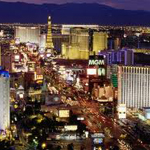 Established in 1905, Las Vegas officially became a city in 1911. At the close of the 20th century, Las Vegas was the most populous American city founded in that century (a distinction held by Chicago in the 19th century). The city's tolerance for various forms of adult entertainment earned it the title of Sin City, and this image has made Las Vegas a popular setting for films and television programs. There are numerous outdoor lighting displays on Fremont Street, as well as elsewhere in the city.
Established in 1905, Las Vegas officially became a city in 1911. At the close of the 20th century, Las Vegas was the most populous American city founded in that century (a distinction held by Chicago in the 19th century). The city's tolerance for various forms of adult entertainment earned it the title of Sin City, and this image has made Las Vegas a popular setting for films and television programs. There are numerous outdoor lighting displays on Fremont Street, as well as elsewhere in the city.The name Las Vegas is often applied to unincorporated areas that surround the city, especially the resort areas on and near the Las Vegas Strip. The 4.2 mi (6.8 km) stretch of Las Vegas Boulevard known as the Strip is mainly in the unincorporated communities of Paradise, Winchester, and Enterprise.
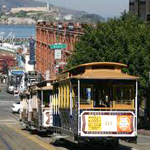 San Francisco, officially the City and County of San Francisco, is the financial, cultural, and transportation center of the San Francisco Bay Area, a region of 7.5 million people which includes San Jose and Oakland.[10] The only consolidated city-county in California,[11] it encompasses a land area of about 46.9 square miles (121 km2)[12] on the northern end of the San Francisco Peninsula, giving it a density of about 17,179 people per square mile (6,632 people per km2). It is the most densely settled large city (population greater than 200,000) in the state of California and the second-most densely populated large city in the United States after New York City.[13] San Francisco is the fourth most populous city in California and the 13th most populous city in the United States, with a population of 805,235 as of the 2010 Census. The San Francisco-Oakland-Fremont metropolitan area has a population of 4,335,391.
San Francisco, officially the City and County of San Francisco, is the financial, cultural, and transportation center of the San Francisco Bay Area, a region of 7.5 million people which includes San Jose and Oakland.[10] The only consolidated city-county in California,[11] it encompasses a land area of about 46.9 square miles (121 km2)[12] on the northern end of the San Francisco Peninsula, giving it a density of about 17,179 people per square mile (6,632 people per km2). It is the most densely settled large city (population greater than 200,000) in the state of California and the second-most densely populated large city in the United States after New York City.[13] San Francisco is the fourth most populous city in California and the 13th most populous city in the United States, with a population of 805,235 as of the 2010 Census. The San Francisco-Oakland-Fremont metropolitan area has a population of 4,335,391.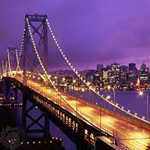 In 1776, colonists from Spain established a fort at the Golden Gate and a mission named for Francis of Assisi on the site.[15] The California Gold Rush of 1849 propelled the city into a period of rapid growth, increasing the population in one year from 1,000 to 25,000,[16] and thus transforming it into the largest city on the West Coast at the time. After three-quarters of the city was destroyed by the 1906 earthquake and fire,[17] San Francisco was quickly rebuilt, hosting the Panama-Pacific International Exposition nine years later. During World War II, San Francisco was the port of embarkation for service members shipping out to the Pacific Theater.[18] After the war, the confluence of returning servicemen, massive immigration, liberalizing attitudes, and other factors (Vietnam) led to the Summer of Love and the gay rights movement, cementing San Francisco as a center of liberal activism in the United States.
In 1776, colonists from Spain established a fort at the Golden Gate and a mission named for Francis of Assisi on the site.[15] The California Gold Rush of 1849 propelled the city into a period of rapid growth, increasing the population in one year from 1,000 to 25,000,[16] and thus transforming it into the largest city on the West Coast at the time. After three-quarters of the city was destroyed by the 1906 earthquake and fire,[17] San Francisco was quickly rebuilt, hosting the Panama-Pacific International Exposition nine years later. During World War II, San Francisco was the port of embarkation for service members shipping out to the Pacific Theater.[18] After the war, the confluence of returning servicemen, massive immigration, liberalizing attitudes, and other factors (Vietnam) led to the Summer of Love and the gay rights movement, cementing San Francisco as a center of liberal activism in the United States.Today, San Francisco is one of the top tourist destinations in the world,[19] ranking 33rd out of the 100 most visited cities worldwide,[20] and is renowned for its chilly summer fog, steep rolling hills, eclectic mix of architecture, and its famous landmarks, including the Golden Gate Bridge, cable cars, and Chinatown. The city is also a principal banking and finance center, and the home to more than 30 international financial institutions,[21] helping to make San Francisco rank eighteenth in the world's top producing cities, eighth in the United States, and ninth place in the top twenty global financial centers. San Francisco has the 2nd highest per capita GDP in the United States after Washington, D.C.
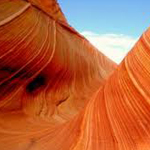 Utah is a state in the Western United States. It became the 45th state admitted to the Union on January 4, 1896. Utah is the 13th most extensive, the 34th most populous, and the 10th least densely populated of the 50 United States. Approximately 80% of Utah's 2,817,222 people live along the Wasatch Front, centering on Salt Lake City. This leaves vast expanses of the state nearly uninhabited, making the population the sixth most urbanized in the U.S. The name "Utah" is derived from the name of the Ute tribe and means "people of the mountains" in the Ute language.[8] Utah is bordered by Arizona on the south, Colorado on the east, Wyoming on the northeast, Idaho on the north and Nevada on the west. It also touches a corner of New Mexico.
Utah is a state in the Western United States. It became the 45th state admitted to the Union on January 4, 1896. Utah is the 13th most extensive, the 34th most populous, and the 10th least densely populated of the 50 United States. Approximately 80% of Utah's 2,817,222 people live along the Wasatch Front, centering on Salt Lake City. This leaves vast expanses of the state nearly uninhabited, making the population the sixth most urbanized in the U.S. The name "Utah" is derived from the name of the Ute tribe and means "people of the mountains" in the Ute language.[8] Utah is bordered by Arizona on the south, Colorado on the east, Wyoming on the northeast, Idaho on the north and Nevada on the west. It also touches a corner of New Mexico.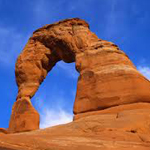 Utah is the most religiously homogeneous state in the Union. Approximately 60% of Utahns are reported to be members of The Church of Jesus Christ of Latter-day Saints (LDS Church), which greatly influences Utah culture and daily life.
Utah is the most religiously homogeneous state in the Union. Approximately 60% of Utahns are reported to be members of The Church of Jesus Christ of Latter-day Saints (LDS Church), which greatly influences Utah culture and daily life.The state is a center of transportation, information technology and research, government services, mining, and a major tourist destination for outdoor recreation. According to the U.S. Census Bureau's population estimates, Utah was the fastest–growing state in the United States as of 2008.[11] St. George, Utah, was the fastest–growing metropolitan area in the United States from 2000 to 2005.
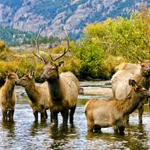 Colorado is a U.S. state that encompasses most of the Southern Rocky Mountains as well as the northeastern portion of the Colorado Plateau and the western edge of the Great Plains. Colorado is part of the Western United States, Southwestern United States, and the Mountain States. Colorado is the 8th most extensive and the 22nd most populous of the 50 United States.
Colorado is a U.S. state that encompasses most of the Southern Rocky Mountains as well as the northeastern portion of the Colorado Plateau and the western edge of the Great Plains. Colorado is part of the Western United States, Southwestern United States, and the Mountain States. Colorado is the 8th most extensive and the 22nd most populous of the 50 United States.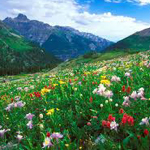 The state was named for the Colorado River, which early Spanish explorers named the Río Colorado for the red colored (Spanish: colorado) silt the river carried from the mountains. On August 1, 1876, U.S. President Ulysses S. Grant signed a proclamation admitting Colorado as the 38th state. Colorado is nicknamed the "Centennial State" because it was admitted to the Union in 1876, the centennial year of the United States Declaration of Independence.
The state was named for the Colorado River, which early Spanish explorers named the Río Colorado for the red colored (Spanish: colorado) silt the river carried from the mountains. On August 1, 1876, U.S. President Ulysses S. Grant signed a proclamation admitting Colorado as the 38th state. Colorado is nicknamed the "Centennial State" because it was admitted to the Union in 1876, the centennial year of the United States Declaration of Independence.Colorado is bordered by the northwest state of Wyoming to the north, the midwest states of Nebraska and Kansas to the northeast and east, on the south by New Mexico and a small portion of the southern state of Oklahoma, and on the west by Utah. The four states of Colorado, New Mexico, Arizona, and Utah meet at one common point known as the Four Corners, which is known as the heart of the American Southwest. Colorado is one of only three U.S. states with no natural borders, the others being neighboring Wyoming and Utah. Colorado is noted for its vivid landscape of mountains, forests, high plains, mesas, canyons, plateaus, rivers, and desert lands.
Denver is the capital and the most populous city of Colorado. Residents of the state are properly known as "Coloradans", although the archaic term "Coloradoan" is still used.
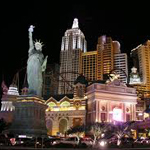 New York is the most populous city in the United States[9] and the center of the New York Metropolitan Area, one of the most populous metropolitan areas in the world. New York exerts a significant impact upon global commerce, finance, media, art, fashion, research, technology, education, and entertainment. The home of the United Nations Headquarters, New York is an important center for international diplomacy and has been described as the cultural capital of the world. The city is also referred to as New York City or the City of New York[16] to distinguish it from the state of New York, of which it is a part.
New York is the most populous city in the United States[9] and the center of the New York Metropolitan Area, one of the most populous metropolitan areas in the world. New York exerts a significant impact upon global commerce, finance, media, art, fashion, research, technology, education, and entertainment. The home of the United Nations Headquarters, New York is an important center for international diplomacy and has been described as the cultural capital of the world. The city is also referred to as New York City or the City of New York[16] to distinguish it from the state of New York, of which it is a part.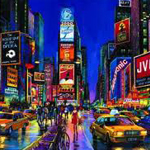 Located on one of the world's largest natural harbors,[18] New York City consists of five boroughs, each of which comprises a state county.[19] The five boroughs — The Bronx, Brooklyn, Manhattan, Queens, and Staten Island — were consolidated into a single city in 1898.[20][21] With a 2010 United States Census population of 8,175,133 distributed over a land area of just 305 square miles (790 km2), New York is the most densely populated major city in the United States. As many as 800 languages are spoken in New York, making it the most linguistically diverse city in the world. The New York City Metropolitan Area's population is the United States' largest, estimated at 18.9 million people distributed over 6,720 square miles (17,400 km2), and is also part of the most populous combined statistical area in the United States, containing 22.2 million people as of 2009 Census estimates.
Located on one of the world's largest natural harbors,[18] New York City consists of five boroughs, each of which comprises a state county.[19] The five boroughs — The Bronx, Brooklyn, Manhattan, Queens, and Staten Island — were consolidated into a single city in 1898.[20][21] With a 2010 United States Census population of 8,175,133 distributed over a land area of just 305 square miles (790 km2), New York is the most densely populated major city in the United States. As many as 800 languages are spoken in New York, making it the most linguistically diverse city in the world. The New York City Metropolitan Area's population is the United States' largest, estimated at 18.9 million people distributed over 6,720 square miles (17,400 km2), and is also part of the most populous combined statistical area in the United States, containing 22.2 million people as of 2009 Census estimates.New York traces its roots to its 1624 founding as a trading post by colonists of the Dutch Republic, and was named New Amsterdam in 1626. The city and its surrounds came under English control in 1664 and were renamed New York after King Charles II of England granted the lands to his brother, the Duke of York. New York served as the capital of the United States from 1785 until 1790. It has been the country's largest city since 1790. The Statue of Liberty greeted millions of immigrants as they came to America by ship in the late 19th and early 20th centuries[36] and is a globally recognized symbol of the United States and its democracy.
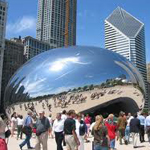 Chicago is the largest city in the U.S. state of Illinois and the third most populous city in the United States, with around 2.7 million residents. Its metropolitan area, sometimes called "Chicagoland," is the third largest in the United States, with an estimated 9.8 million people in the states of Illinois, Wisconsin and Indiana. Chicago is the county seat of Cook County.
Chicago is the largest city in the U.S. state of Illinois and the third most populous city in the United States, with around 2.7 million residents. Its metropolitan area, sometimes called "Chicagoland," is the third largest in the United States, with an estimated 9.8 million people in the states of Illinois, Wisconsin and Indiana. Chicago is the county seat of Cook County.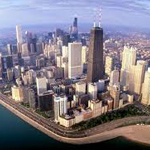 Chicago was incorporated as a town in 1833, near a portage between the Great Lakes and the Mississippi River watershed. Today, the city retains its status as a major hub for industry, telecommunications and infrastructure, with O'Hare International Airport being the second busiest airport in the world in terms of traffic movements. In 2008, the city hosted 45.6 million domestic and overseas visitors.[9] Among metropolitan areas, the Chicago area has the 4th largest Gross Domestic Product (GDP) in the world. Chicago is an important worldwide center of commerce.
Chicago was incorporated as a town in 1833, near a portage between the Great Lakes and the Mississippi River watershed. Today, the city retains its status as a major hub for industry, telecommunications and infrastructure, with O'Hare International Airport being the second busiest airport in the world in terms of traffic movements. In 2008, the city hosted 45.6 million domestic and overseas visitors.[9] Among metropolitan areas, the Chicago area has the 4th largest Gross Domestic Product (GDP) in the world. Chicago is an important worldwide center of commerce.The city's notoriety has found expression in numerous forms of popular culture, including novels, plays, movies, songs, various types of journals (for example, sports, entertainment, business, trade, and academic), and the news media. Chicago has many nicknames, which reflect the impressions and opinions about historical and contemporary Chicago. The best known include: "Chi-town," "Windy City," "Second City,"[footnote 1] and the "City of Big Shoulders
